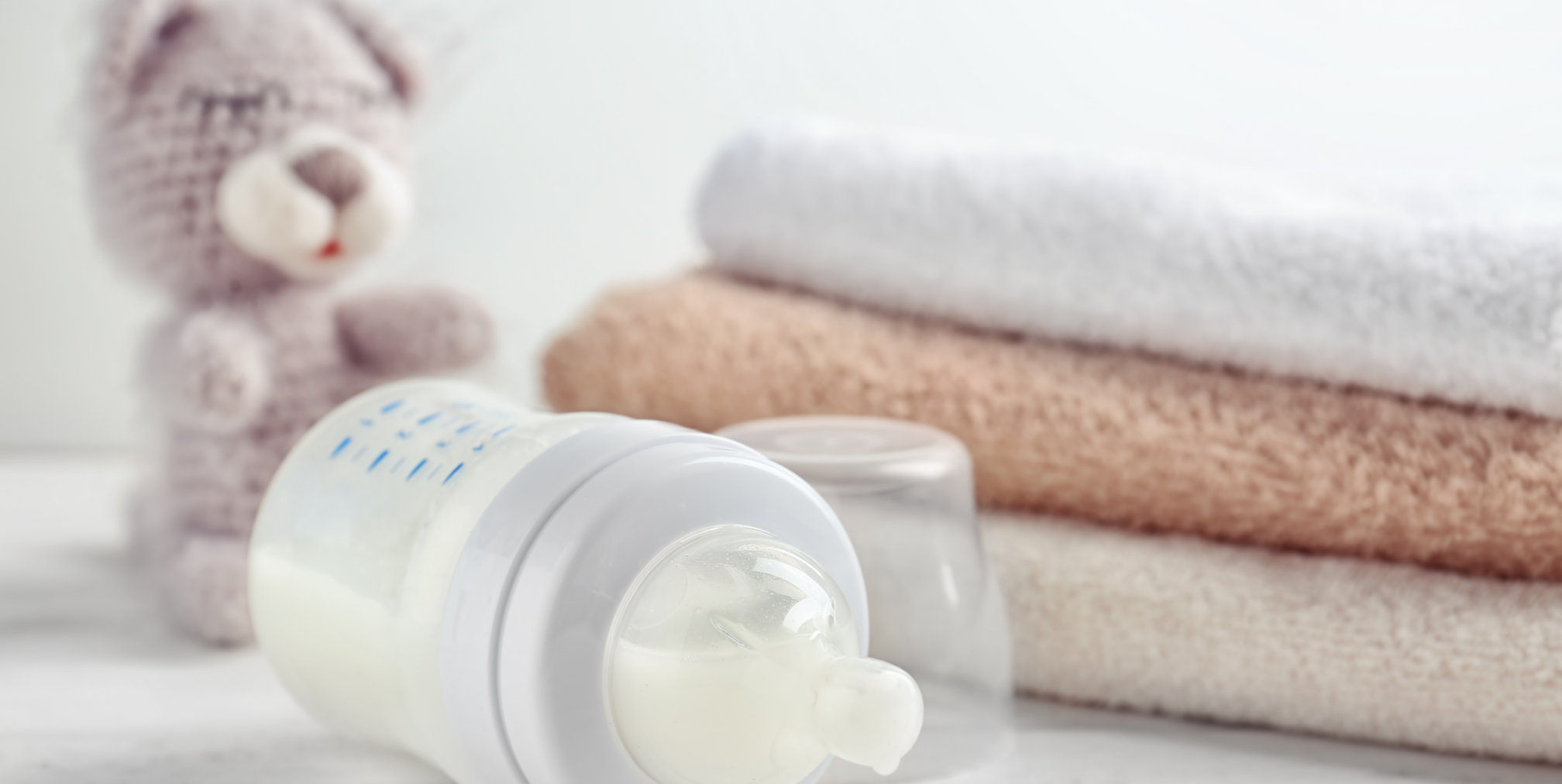A fussy baby at the breast can be frustrating and leave you wondering what’s causing the discomfort. Three common culprits are oversupply of breast milk, reflux, and sensitivity to cow’s milk protein. These issues can sometimes mimic each other, making it even trickier to pinpoint the exact reason for your baby’s fussiness. And to make matters even more challenging, oversupply and undersupply share some of the same symptoms like fussiness at the breast. Let’s delve into over supply, reflux and cow’s milk protein sensitivity and explore solutions to create a calmer breastfeeding experience.

Signs of Oversupply in Your Baby:
- Fidgety Feeding: Instead of settling in for a peaceful feeding session, your baby might become restless, detach frequently from the breast, arch their back uncomfortably, or pull away crying mid-feed. This can be due to the strong let-down reflex associated with oversupply, which can overwhelm your baby with a forceful flow of milk.
- Choking, Coughing, and Gas Pains: The forceful flow of milk in oversupply can sometimes lead to your baby choking or coughing as they try to manage the intake. Additionally, they might experience excessive gas pains due to swallowing a lot of air while struggling to regulate the strong milk flow.
- Frequent Spit-Up and foamy explosive Stools: Large amounts of frequent spit-up, especially after feeds, can be a sign of oversupply. The excess milk might not be properly digested, leading to green or foamy stools as well.
Signs of Oversupply in You:
- Sprayed Milk, Not Just Leaks: Oversupply often manifests as breasts that leak or spray milk, not just a simple leaking. This forceful release of milk can happen spontaneously or when you take off your bra or during showering.
- A Powerful Let-Down Reflex: You might experience a very strong and forceful let-down reflex. This can be uncomfortable for you and overwhelming for your baby.
- Breast Fullness and Occasional Engorgement: Even after feeding your baby, your breasts might still feel full and uncomfortable due to the constant overproduction of milk. You might experience recurring plugged ducts and engorgement

Difficulties in Distinguishing Oversupply from Undersupply
Some symptoms of oversupply overlap with those of an undersupply, making it confusing. However, certain signs like squirting milk and strong letdown are unique to oversupply.
How To Deal With Oversupply
- Laid-Back and Side-Lying Positions: These breastfeeding positions allow gravity to assist your baby in regulating the flow of milk and can make latching easier for them.

Biological, laid-back position

Side-lying position
- Expressing Before Feeding (Briefly): Expressing a small amount (no more than 20 ml.) of milk before feeding can help ease the initial forceful letdown and make the flow more manageable for your baby.
- Scissor Hold for Reduced Flow: This hand positioning technique involves placing one finger above the nipple and your thumb below it, creating a “scissor” shape. This can help reduce the intensity of the milk flow for your baby during feeding.

- Feeding from One Breast per Session: When you have oversupply, feeding your baby from only one breast per feeding session allows them to get fattier milk and reduces gas and reflux.
- Block Feeding (Consult a Lactation Consultant): This technique involves feeding your baby from the same breast during two or more consecutive feeding sessions. It’s called block feeding because you feed from the same breast for a block of time, usually starting from 2 hours and working up to 6 if there is no change. This is done for two-three days at a time to asses its effectiveness While it can be effective in reducing milk production, it’s crucial to consult with a lactation consultant before implementing this method to ensure it’s the right approach for you.
- Mint Tea: drinking tea made from fresh mint may help to reduce your milk flow. start with one cup a day and work your way up to three if you see no change.
Considering Cow’s Milk Protein Sensitivity
Cow’s milk protein sensitivity is often linked with oversupply and reflux. This may be due to the irritation of the gut caused by high lactose breast milk that is produced when a mother has oversupply. Even in the absence of oversupply, cow’s milk proteins from the mother’s diet can pass through breast milk and cause problems in the baby. The symptoms of this sensitivity can also imitate oversupply, and the sensitivity itself can cause reflux. Therefore, it’s best to assume that all three issues are present unless there is a clear indication that one is not.
Addressing Cow’s Milk Protein Sensitivity:
Eliminate Dairy from Your Diet: Try completely avoiding dairy products for three weeks. This allows the protein to clear from your milk and may improve your baby’s symptoms.
Alternatives to Cow’s Milk: Opt for plant-based milk substitutes like rice or oat milk.
Remember:
Consult a lactation consultant for a proper diagnosis and personalized guidance.
This blog post provides information, but it’s not a substitute for professional medical advice.
By understanding these issues and available solutions, you can create a calmer and more comfortable breastfeeding experience for both you and your baby.







